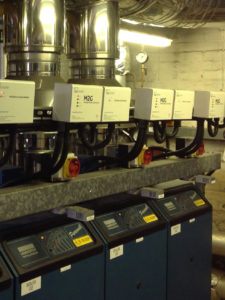 Turning an energy-saving idea into reality nearly always relies on getting the required investment, either internally or externally. Understanding the options and supporting proposals with a sound business case is essential, says Geoff Newman of Sabien Technology, in this sponsored post.
Turning an energy-saving idea into reality nearly always relies on getting the required investment, either internally or externally. Understanding the options and supporting proposals with a sound business case is essential, says Geoff Newman of Sabien Technology, in this sponsored post.
In recent years many good ideas to increase energy efficiency have fallen by the wayside due to lack of available finance or a convincing business case. Awareness of third-party schemes to help finance such projects, as well as a sound business case, can greatly improve the potential for the project to go ahead.
In the public sector, for example, there are a number of schemes available that can help with funding. One that may be familiar is Salix Finance Ltd, which illustrates the general principles.
Salix allows any public sector body that receives the majority of its income directly from the public purse to apply for interest-free loans to finance up to 100% of the cost of energy-saving projects, dependent on fulfilling certain criteria. The scheme is an excellent way of supporting your energy efficiency plans.
There are also schemes to help fund energy-saving projects in the private sector, such as those offered by the Carbon Trust. Frequently though, energy managers in the private sector are seeking investment from within their own business, often competing against other departments for available capex.
In all these cases it is essential the business case is strong and, just as importantly, in language the CFO will understand. Most CFOs are more interested in returns than terms like sustainability and carbon.
The proposals should look beyond a simple payback. It is likely your CFO will be looking for Internal Rate of Return (IRR), Return on Capital Employed (ROCE) or Net Present Values (NPV). Understanding which metrics are measured by your finance team and what information they require will increase the chances of gaining funding.
For example, when boiler load controls such as Sabien’s M2G are installed, the typical cost savings are 12% across an estate with payback under 2 years. However, when you enhance the business case and include mitigated carbon tax costs (e.g. the CRC), Internal Rate of Return (IRR) of over 17% and ROI of 156% the business case becomes very compelling.
Consequently, the energy efficiency project may deliver a better IRR than other projects within the organisation. Once the financial team and board see this it will be hard for them not to allocate the budget and prioritise the project.
In this respect, the provider of energy-saving technology should be able to help with development of the business case. For example, Sabien has helped many public sector organisations take advantage of the funding available from Salix for projects using M2G to reduce gas consumption, providing detailed business cases which go beyond the simple payback.
Subsequent measurement and verification of such projects is a must as the finance team will want to know the benefits realised from the investments. If you can present evidence 6-12 months after project completion, confidence will increase, making future investment easier to obtain.
The key things, then, are to understand the full extent of savings that may be achieved, verify that achievement with accurate measurement and verification and then use that data in support of ongoing investment in energy efficiency.
Find out more at sabien-tech.co.uk
Click here to see if you qualify for a free subscription to the print magazine, or to renew.
Follow us @EnergystMedia. For regular updates, sign up for the free newsletter.



